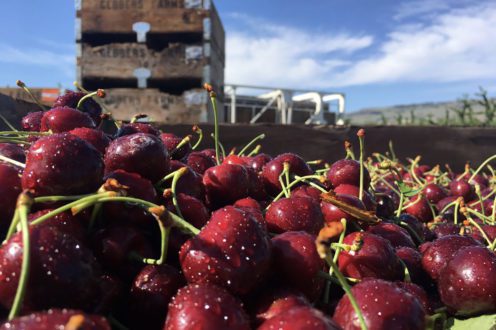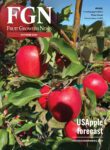Jun 25, 2021WSU: Remove trees infected with X-disease and little cherry virus
Washington State University Tree Fruit Extension has issued a notice calling for trees infected with X-disease or little cherry virus to be removed.
“Any infected trees that remain in the orchard are a reservoir of disease for your orchard and your neighbor’s.”
WSU cautioned that before removing infected trees treat with insecticide so that leafhopper/ mealy bug vectors do not move to uninfected trees. It is recommended to apply glyphosate herbicide to trees at the time of tree removal or test adjoining trees to detect latent infections early.
Herbicide application can also help kill roots of infected trees so that they can no longer infect new roots via root grafting.
For more information see:
BMPs for tree removal for X-disease and Little Cherry Virus infected trees
Tree Removal Methods for X-Disease and Little Cherry Disease- Preliminary Trial Report
Manage the groundcover in your cherry and stone fruit orchards to minimize hosts of X-disease phytoplasma and habitat for leafhopper vectors
Clovers, dandelions, curly dock, bitter cherry, and chokecherry are known alternative hosts for X-disease phytoplasma. Grasses appear to be poor leafhopper hosts and are not a host for phytoplasma. Apply broadleaf herbicides to minimize broadleaf weeds (phytoplasma hosts).
Healthy weed-free grass strips compete with broadleaf weeds and supply a non-phytoplasma host environment. Keeping orchards mowed after harvest may also help reduce quantity of alternative X-disease hosts and leafhopper habitat. Some studies have found higher numbers of leafhoppers in less frequently mowed environments in other systems but this has not been studied in cherry orchards with X-disease (Horton 2002, Korosi 2011, Buri 2006).
Consider risk when mowing orchards before harvest. Ideally apply insecticides before mowing to protect trees. When this is not possible (PHI considerations etc) consider your risk. If X-disease prevalence and leafhopper prevalence is low the risk of mowing is likely minimal. If alleyway cover is primarily grass, grasses are not hosts for phytoplasma, so the risk of phytoplasma spread is less likely than when groundcover has phytoplasma hosts.
For more information see http://treefruit.wsu.edu/…/disease-management/western-x/
Recursos en Español http://treefruit.wsu.edu/…/recursos-para-el-manejo-de…/</















